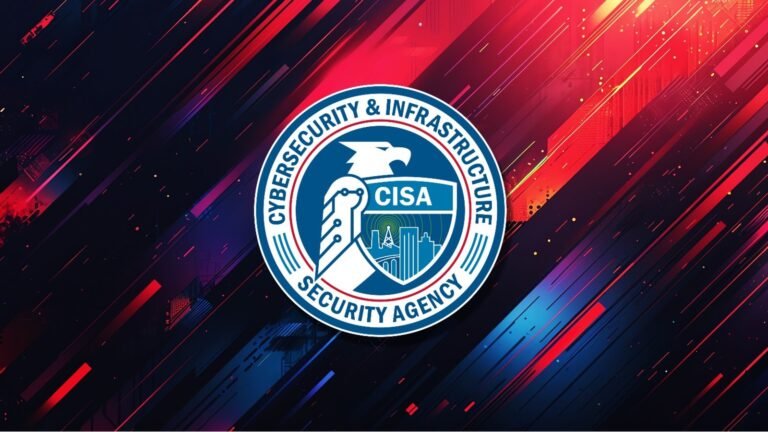Fast Facts
-
Launch of Thorium: CISA has made Thorium, an open-source cybersecurity platform for malware and forensic analysis, publicly available, developed in partnership with Sandia National Laboratories.
-
High Performance: The platform automates cyberattack investigations, capable of processing over 1,700 jobs per second and analyzing more than 10 million files per hour, enhancing the efficiency of cybersecurity teams.
-
Comprehensive Functionality: Thorium supports various mission functions, such as software analysis, digital forensics, and incident response, allowing seamless integration of tools and improved analysis workflows.
- Community Empowerment: By sharing Thorium, CISA aims to strengthen the broader cybersecurity community’s ability to leverage advanced analytical tools, contributing to enhanced defense against malware and vulnerabilities.
Underlying Problem
The U.S. Cybersecurity and Infrastructure Security Agency (CISA) has unveiled Thorium, an innovative open-source platform designed to enhance the capabilities of malware and forensic analysts across various sectors. Developed in collaboration with Sandia National Laboratories, this scalable cybersecurity suite possesses an extraordinary capacity to automate cyberattack investigations, handling over 1,700 tasks per second and processing upwards of 10 million files each hour. The announcement reflects CISA’s commitment to fortifying cyber defenses by facilitating the integration of commercial, open-source, and bespoke analytical tools, ultimately enabling cybersecurity teams to tackle complex malware threats more effectively.
CISA Associate Director for Threat Hunting, Jermaine Roebuck, emphasizes that by making Thorium publicly accessible, the agency seeks to empower the broader cybersecurity community to utilize advanced tools for malware and forensic analysis. This initiative is a continuation of CISA’s efforts to enhance national cybersecurity, following the recent release of tools such as the Eviction Strategies Tool and the “Malware Next-Gen” analysis system—each designed to aid in real-time threat containment and increase overall security resilience. By sharing Thorium through its GitHub repository, CISA aims to foster collaboration among cyber defense teams, ensuring a proactive stance against ever-evolving cyber threats.
Potential Risks
The release of Thorium by the U.S. Cybersecurity and Infrastructure Security Agency (CISA) heralds a significant advancement in cybersecurity capabilities, yet it also introduces a spectrum of risks for businesses, users, and organizations that may become collateral damage in the event of cybersecurity vulnerabilities. The open-source nature of Thorium, while fostering collaborative defense mechanisms, may inadvertently expose organizations that inadequately implement or adapt the technology to sophisticated cyber threats, particularly if their systems are not sufficiently fortified against potential exploitation by malicious actors. As Thorium automates complex analysis workflows, any misconfiguration or oversight in its integration could lead to delayed incident responses, information leaks, and systemic failures across interconnected networks. Thus, organizations relying on Thorium without robust cybersecurity protocols could face cascading repercussions—ranging from diminished consumer trust and reputational harm to potential financial losses—if coalescing cyber threats overwhelm their defenses and propagate beyond the initial breach.
Possible Next Steps
In the ever-evolving landscape of cybersecurity, the expedient remediation of vulnerabilities becomes paramount, particularly as the Cybersecurity and Infrastructure Security Agency (CISA) open-sources their Thorium platform for malware and forensic analysis.
Mitigation Measures
- Implement timely software patches
- Conduct thorough vulnerability assessments
- Enhance endpoint detection and response
- Employ behavioral analysis tools
- Strengthen network segmentation
- Train personnel on malware recognition
- Establish an incident response plan
- Utilize real-time monitoring systems
NIST CSF Guidance
According to the NIST Cybersecurity Framework (CSF), organizations should prioritize continuous risk assessment and management in response to potential threats. For in-depth guidance, refer to NIST Special Publication 800-53, which outlines necessary security and privacy controls for protecting organizational operations.
Stay Ahead in Cybersecurity
Explore career growth and education via Careers & Learning, or dive into Compliance essentials.
Explore engineering-led approaches to digital security at IEEE Cybersecurity.
Disclaimer: The information provided may not always be accurate or up to date. Please do your own research, as the cybersecurity landscape evolves rapidly. Intended for secondary references purposes only.
Cyberattacks-V1

